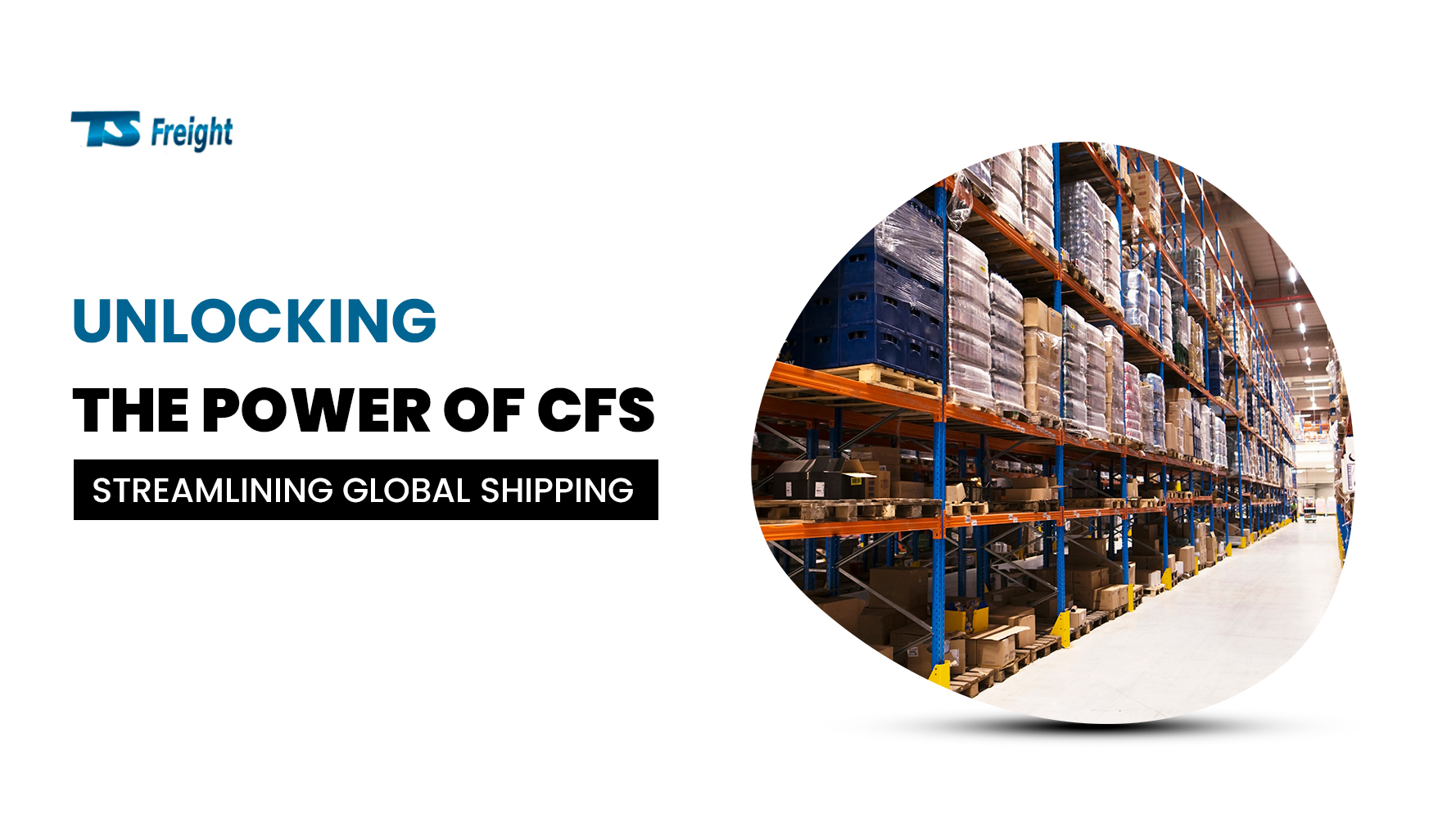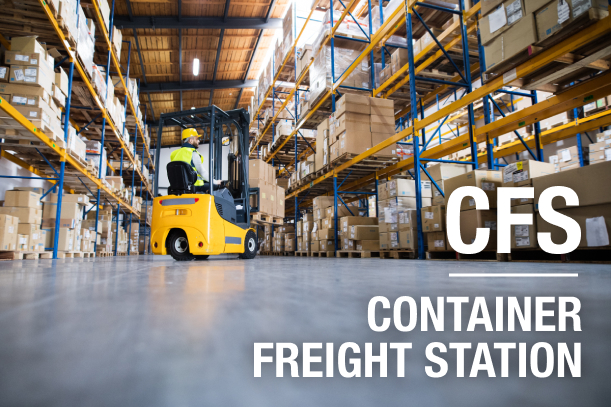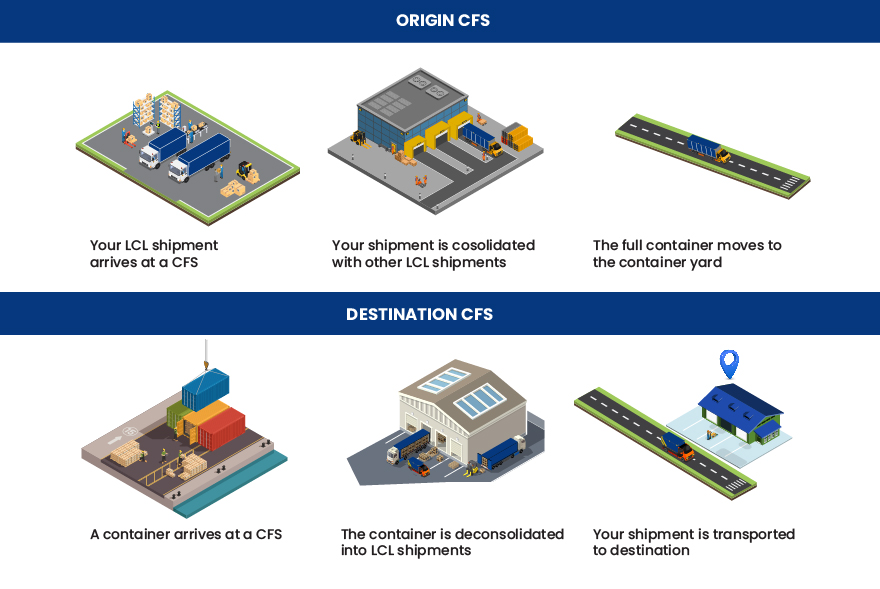What is Container Freight Station (CFS)?
Learn what a Container Freight Station is and the role it plays in international shipping.
Table of Contents

Today's shipping process has been revolutionized with the help of container freight stations (CFS). This development has paved the way for a seamless network for the distribution and shipping of containers.
CFS, which has become one of the most critical parts of supply chain transportation, is currently witnessing an increase in demand in both e-commerce and overall less-than-a-container load (LCL) shipments.
So what is CFS, and why is it a big deal in the shipping industry? This and more will be discussed in this article. Read on.
What is a Container Freight Station (CFS)?
Container Freight Station (CFS) is a facility where cargo is consolidated and deconsolidated for easy shipping. It serves as a central hub for containerized goods and provides a range of services, including cargo inspection, storage, and loading/unloading.
This warehouse is typically near shipping ports or major railway hubs and is either privately owned or operated by shipping terminals which are also responsible for customs examination and clearance.

CFS locations are strategically chosen for easy transportation of cargo, which is typically transported by truck, train, or picked up by customers after deconsolidation.
How Does A Container Freight Station Work?
A Container Freight Station (CFS) is used for grouping and ungrouping cargo for export and import. The process for each is outlined below:
For Exportation:
- Customers arrive at the CFS with products and shipping documents like packing list and invoice.
- Customs begin the cargo clearance process after the items are uploaded. Most container freight stations have their own division of the local customs authority which makes the clearing process for goods faster and easier.
- The cargo is consolidated by grouping it into various export locations. For example, if there are multiple Less Than Container Load (LCL) shipments destined for a same port from different customers, the CFS custodian will consolidate them into a single container based on their volume before shipping them out.
- The containers are stamped with an identifying label and sent to the port or terminal for export via CFS.
For Importation
- Importers complete import documents at the port of arrival.
- The container is sent to the CFS for unloading and handed over to Customs
- Import documentation is submitted to the customs broker for clearance and payment of Customs duty and tax.
- After the Customs releases the shipment, the cargo is sent to the importer via a gate permit through the CFS custodian.

Key Benefits and Functions of the CFS
Container freight stations had the general function of simplifying the process of import and export. Other functions of CFS include the following:
- Acting as a temporary holding site for containers that are delayed or awaiting clearance, reducing congestion at the port
- Receiving, grouping, dispatching, and storing cargo to and from a freight station
- Preparing an internal layout plan for cargo loading to ensure proper stacking with sufficient space and protective material
- Coordinating with customs for the customs clearance of goods
- Loading and unloading of containers
- Facilitating quick transportation of goods to the appropriate destination
Benefits of CFS
- Providing control and efficiency for land freight movements for clients
- Maintaining records of products being shipped in and out of a country
- Speeding up shipment and transportation processes while saving costs by grouping LCL shipments into larger containers
- Ensuring optimum control over goods
- Lessening container movement as CFS acts as a concentration point for consolidation of smaller shipments, making LCL shipments less expensive
- Assigning a unique identification number to each container shipped via CFS, making it easier to track the container or product being transported.
The Link Between CFS and LCL Shipping?
The Container Freight Station (CFS) and Less Than Container Load (LCL) shipping are closely linked. LCL shipping occurs when a client's goods are not enough to fill a container, and the goods of multiple clients are consolidated into one container by CFS.
CFS plays a vital role in the consolidation process by grouping the small volume of cargo into one or more containers, depending on the size of the goods. This grouping ensures that the container space is fully utilized, and the goods are transported as a unit to the destination country, making LCL shipping cost-effective.
In contrast, Full Container Load (FCL) occurs when one seller's consignments occupy an entire 20-foot or 40-foot container. CFS does not usually handle FCL shipments.
Overall, CFS and LCL shipping provide an affordable and efficient solution for exporters with smaller shipment volumes. CFS's consolidation process allows for the optimization of container space, reducing shipping costs for multiple exporters who can share one entire container.
What’s the Difference Between CFS and CY?
Container Yard (CY) and Container Freight Station (CFS) are two different terms with distinct functions.
CY is a dedicated area within the port where Full Container Loads (FCL) are stored before and after importation and exportation. Containers are delivered to a designated CY at the port under the control of the shipping line until it reaches the CY at the port of discharge, where the shipper picks up the cargo.
On the other hand, CFS is a warehouse where shipments from different exporters or importers are consolidated or deconsolidated before the goods are exported or after being imported, respectively. CFS is where cargo is grouped and packed into a container or unpacked from a container for distribution to different importers.
While CY is primarily used for FCL shipments, CFS is used for mainly Less Than Container Load (LCL). The key difference between the two is that CY is a dedicated container storage area, while CFS is a consolidation and deconsolidation warehouse for cargo.
Conclusion
In conclusion, Container Freight Stations (CFS) are an essential component of the supply chain transportation process, revolutionizing the shipping industry.
CFSs are warehouses located near shipping ports or railway hubs that consolidate and deconsolidate cargo for shipping. The process involves grouping the cargo into various export locations for exportation or unpacking it after importation. CFSs and LCL shipping provide an affordable and efficient solution for exporters with smaller shipment volumes, optimizing container space, and reducing shipping costs.
Overall, CFSs play a critical role in streamlining the importing and exporting of goods, making the shipping process faster, cost-effective, and efficient.